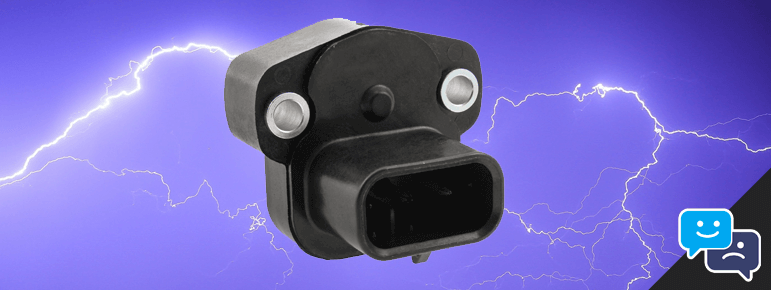Last Updated on April 19, 2024
Key Takeaways
- Symptoms of a bad TPS include poor acceleration, rough idling, inconsistent throttle response, stalling engine, decreased fuel efficiency, and limp mode.
- Symptoms such as low idle speed, sluggish throttle response, and increased fuel consumption can be resolved by resetting the TPS.
- Manufacturers recommend replacing the TPS every 5 years or 80,000 miles, but it may last the lifetime of the vehicle.
- A TPS reset is necessary when replacing the sensor, cleaning the throttle body, or experiencing rough idling, slow acceleration, or error codes.
- Faulty TPS can trigger various trouble codes like P0120, P0121, P0122, etc., affecting engine performance.
If you’ve noticed something off with your car’s performance, particularly a decrease in acceleration or power, it could be related to your Throttle Position Sensor (TPS). As such, resetting it can often rectify any issues you may be experiencing. So, when exactly should a throttle position sensor reset be performed?
A throttle position sensor (TPS) reset should be performed when the check engine light turns on, or you begin to notice poor acceleration, or idling problems and hesitation. Some manufacturers may also recommend routine TPS resets for optimal performance.
It might be necessary for you to perform a TPS reset at one point or another. Symptoms such as low idle speed, sluggish throttle response, and check engine light can be resolved from a TPS reset.
However, keep in mind that all these symptoms are quite vague and might be indications of other engine issues.
Though there is no fixed replacement interval for a throttle position sensor, it is recommended by some manufacturers to replace the unit every 5 years or 80,000 miles as a preventative measure.
With that being said, a TPS sensor might end up lasting the lifetime of your vehicle.
But if you notice your car running a bit rough lately, and the dreaded check engine light is illuminated – your throttle position sensor might be to blame. Don’t stress however, it could just be time for a reset.
In this guide, we’ll cover how to reset the TPS sensor. Then we’ll walk through the basics of how these sensors work, typical error codes, and symptoms of a bad throttle position sensor.
Let’s get started!
When Is a Throttle Position Sensor Reset Required?
A throttle position sensor reset or calibration may be necessary in certain situations to ensure a vehicle’s engine and transmission work correctly.
For example, you will need to reset the TPS when you replace it. Or, a reset is required when the throttle body is cleaned, facing issues like rough idling, slow acceleration, or error codes.
You might have to perform a throttle position sensor reset if:
- The check engine light has been triggered
- There are acceleration problems (delay in gear shifting, poor power, hesitations during acceleration, etc.)
- An increase in fuel consumption
- The vehicle experiences engine stalls, surging, or hesitating while idling
- Can disrupt the cruise control’s ability to maintain a steady speed
How to Reset Throttle Position Sensor
Stumped on how to reset throttle position sensor? Don’t worry; this task is not as complicated as it may seem. There are several methods to throttle position sensor reset procedure, and we’ll go over each one next.
By Pushing the Accelerator Pedal
One of the easiest ways to fix the issue is by putting the key in the ‘on’ position without starting the engine (or push the start button once).
First, hold the accelerator pedal down to the floor for about 20 seconds. Next step is to slowly release the pedal and turn the vehicle off.
Finally, start the engine as you normally would and go for a quick drive to see if this trick helped.
By Using an OBD2 Scanner
If you have access to a OBD2 diagnostic tool this can be used to rest the TPS sensor. Just make sure to use one that is compatible with your car model and that has a sensor reset feature.
By Disconnecting the Battery
You can take off the negative cable from the battery or fully disconnect the battery and reconnect it in 5 minutes, but this will make all the electronics in your car reset.
After you have reconnected the battery, turn the ignition switch to ‘on’, hen slowly push the gas pedal to the floor.
Leave it there for a few seconds, and slowly release it. Repeat 3 times, then turn the ignition switch to ‘off’, and remove the key.
What Error Codes Can a Throttle Position Sensor Cause?
A faulty throttle position sensor will trigger various trouble codes. Using a scan tool, one of the following codes below may appear in your vehicle’s engine control module:
| Trouble Code | Description |
|---|---|
| P0120 | Throttle/Pedal Position Sensor A Circuit Malfunction |
| P0121 | Throttle/Pedal Position Sensor A Circuit Range/Performance Problem |
| P0122 | Throttle/Pedal Position Sensor A Circuit Low Input |
| P0123 | Throttle/Pedal Position Sensor A Circuit High Input |
| P0220 | Throttle/Pedal Position Sensor/Switch B Circuit Malfunction |
| P0221 | Throttle/Pedal Position Sensor/Switch B Circuit Range/Performance Problem |
| P0222 | Throttle/Pedal Position Sensor/Switch B Circuit Low Input |
| P0223 | Throttle/Pedal Position Sensor/Switch B Circuit High Input |
What Are Symptoms of a Bad Throttle Position Sensor?
A bad TPS will affect the overall vehicle’s performance. Poor acceleration, rough idling, and inconsistent throttle response are the most common symptoms of a bad TPS.
You may notice that the engine may stall, fuel efficiency drops, and the check engine light may illuminate.
In more severe cases, the vehicle will enter into limp mode, causing drivetrain power issues. The transmission shifting in automatic vehicles can also be affected. Lastly, there may be high or unstable idling.
Overall engine performance can suffer, leading to reduced power and increased emissions. If you encounter these symptoms, it’s crucial to have a mechanic diagnose and potentially replace the faulty TPS to restore proper throttle function and vehicle performance.
Throttle Position Sensor Reset FAQs
What Does A Throttle Position Sensor do Exactly?
The function of a throttle position sensor is to gauge the degree of openness of the throttle valve, thereby regulating the amount of air that can enter the engine’s intake manifold.
While it’s purpose is pretty basic and easy to understand, it’s an important piece to the overall performance of an engine.
What Will a Bad Throttle Position Sensor do?
Your engine’s performance will be affected by a TPS failure. In most cases the engine will idle normally but struggle to gain speed. Because the computer fails to signal to the engine to provide enough fuel while airflow is simultaneously rising, resulting in difficulty accelerating.
This is your sign that you have a malfunctioning TPS.
What’s the Easiest Way to Reset my Throttle Position Sensor?
To reset your throttle position sensor, the simplest approach would be to disconnect the negative cable from your battery for a duration of five minutes.
Where Typically is the Throttle Position Sensor Located?
The throttle position sensor is usually on the side of the throttle body valve spindle where it monitors throttle angle, speed of throttle opening and closing, and throttle closed position at idle.
Final Thoughts: Throttle Position Sensor Reset
It’s clear that the time to do a throttle position sensor reset is when the check engine light comes on. Other signs for the rest is when your fuel economy drops. Or, you begin to experience hesitations, stalling or surging while idling. And lastly, you begin to notice changes in acceleration.
This could easily be a DIY project if you have access to a scan tool. However, if the issue persists after resetting the sensor, then you might need to take it to a professional.

Managing Editor
Christopher is an automotive technical writer. When he’s not at the local autocross event, he can often be found working on one of his cars. Specializes in automotive class action law, industry trends, and automotive maintenance. Email me direct, or learn more about us

